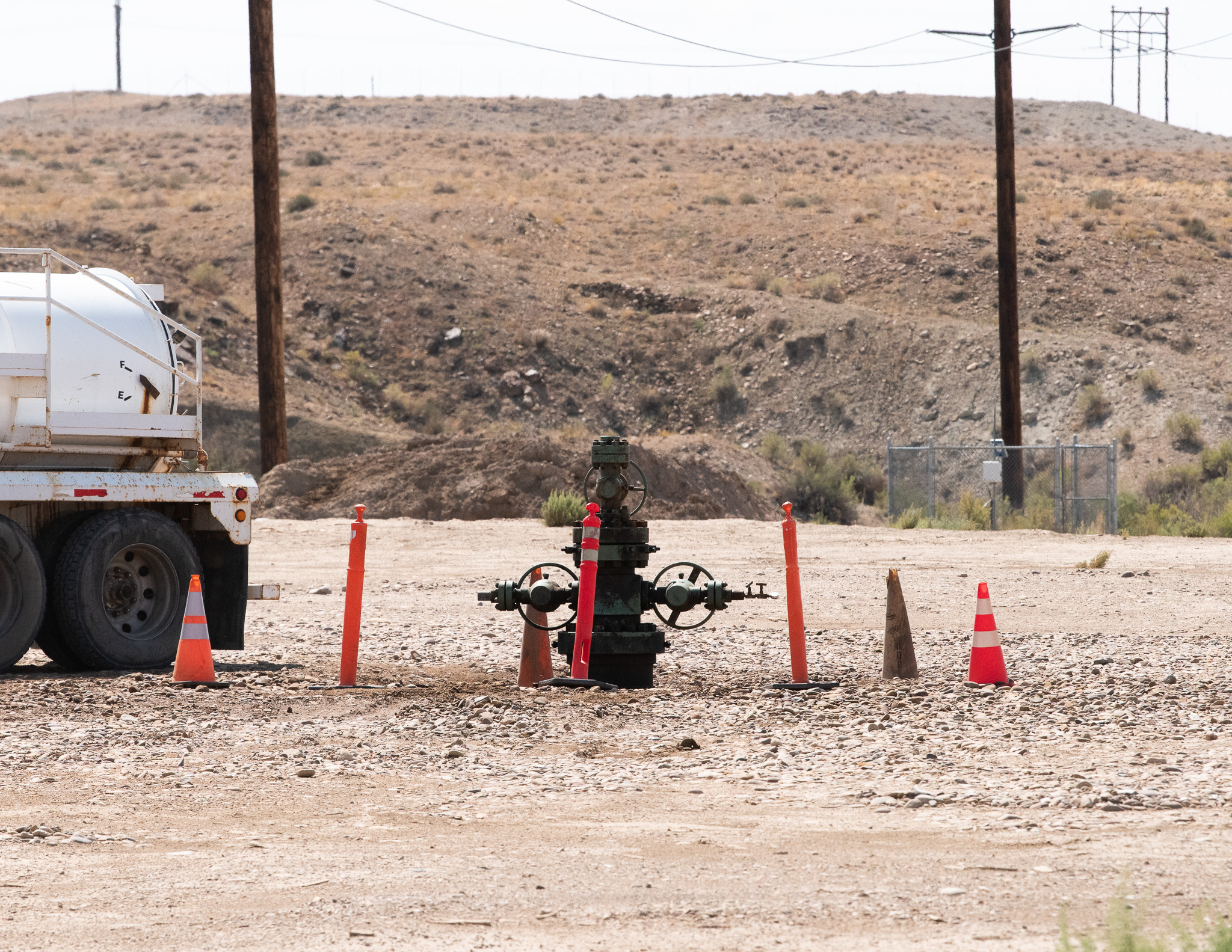Bill proposals this year in Nevada and Utah have sparked a conversation about the regulation of pumping brines that exist deep in the earth’s crust.
This conversation comes as companies now have drilling and processing techniques that allow machines to access, extract, and profit from places that were once infeasible. These brines — the remains of water resources that can be many millennia in age — are concentrates of saline waters that are chalk full of prized minerals like lithium, magnesium, barium, boron, and strontium.
Companies can pump the water, extract the minerals, and return the water without much consumptive usage. Companies will need freshwater to process. But, because they can return water underground, some interests in corporate America tout these technologies as something that should not cause anyone concern.
Some hydrologists will tell you that there’s no such thing as a non-consumptive water use. That’s because the very removal of water, even temporarily, forever changes the nature of an aquifer system. Regulators must ask hard questions of entities that want to pump and reinject water. Just because brines come from deep in the earth doesn’t mean that there isn’t a connection with other waters.
Regardless, companies cast these forms of extraction as clean and green. And, while they are different than traditional hard rock mining operations synonymous with deep pits and tailings piles, there are still public interest considerations to weigh — especially when it comes to water in the nation’s driest places.
The drafters of our water laws could not have had this type of extraction in mind when they created the cornerstones of our appropriation regimes. So now we are tasked with figuring out what’s best.
The magnitude of human-induced phenomena — like pumping water thousands of feet deep — changes geologic formations. There is nothing universal when it comes to localized hydrogeologic considerations. There are connections between deep groundwater and shallower aquifers in some places. There are pressure gradients and geologic formations that, when deprived of the water, change in ways that can have hydrologic implications in each stratigraphic instance. These are complex mosaics.
GBWN conceptually proposed AB109 in the Nevada Legislature and had a significant interest in HB478 in Utah. Both pieces of legislation focus on public participation, property rights, and the public interest. Both bills have implications for our work to ensure that companies are not undermining the core tenets of our laws and impacting communities — plant, animal and human.
Again, non-consumptive uses of water don’t preclude detrimental impacts. This is a novel conversation. But what’s new today will be standard tomorrow. We must regulate with complexity in mind.
Here is a rundown on our perspective and interests in the matters.
UTAH HB478: BRINE MINING AMENDMENTS
This legislation, which passed in the final hours of Utah’s legislative session, expands a program that lawmakers created in 2024. The bill, sponsored by Rep. Bridger Bolinder and David Hinkins, provides clarity on many much-needed functions of law for companies and members of the public. GBWN knows first-hand about the gaps that existed in Utah law prior to the passage of HB478. We are litigating over matters regarding deep lithium brines that exist below the Green River and a radioactive waste site. Some of these gaps are the subject of our litigation.
The bill offers clarity on general oversight of brine mining by the Division of Oil Gas and Minerals, royalties, multi-mineral development areas, the limits of local regulation (versus that of the state), and much of the nitty-gritty regarding permitting. For GBWN, most importantly, the bill affirmed that brine operations must go through the standard water rights permitting process that exists for all water users. This requirement sends an important message to other states across the west that regulators must be weighing impacts of non-consumptive rights for deep brine extraction.
This will ensure that regulators can consider hydrologic connectivity, the implications of non-consumptive proposals, and other place-based hydrologic factors.
On a large scale, while we can’t see what’s happening below the earth’s crust, we can make educated guesses. Nevertheless, there is always uncertainty associated with drilling, pumping and removing water/minerals from those depths of the earth.
Considering their age and depth, it’s fair to say that brines are, for the most part, not renewable resources. No matter what you believe about mineral extraction, you can agree with GBWN that regulating the extraction of deep waters and minerals should be done carefully and with proper oversight.
NEVADA AB109: WATER RIGHTS FAIRNESS ACT
Democrat Assemblywoman Selena La Rue Hatch championed the legislation to help us guarantee proper permitting and regulation for companies looking to tap deep brines.
Right now, there are loopholes in Nevada law regarding this matter. Specifically, there is statutory uncertainty about water permitting requirements for the geothermal industry and some brine extractors that can claim zero-consumptive use. Specifically, we know that some of their uses of deep brine water can go un-permitted. That is a major loophole that is problematic for other water users that have gone through the process of getting a permit. Again, pumping water from deep underground sources can cause surface-level problems for existing water users and wildlife and changes to groundwater systems. It is negligent to ignore the actions of industrial users on our water supplies.
AB109 mandates that brine pumpers — even if they re-inject the water — must follow the existing rules required of farmers, hard-rock miners, cities and many other water users. This is standard for other non-consumptive uses, like hydropower operators, that siphon water from rivers or streams to spin turbines and then return that water back to the river or stream.
We need to account for all industrial water users: Where is the water diverted, where is it returned, and how is it used? These are basic questions.
What we want is nothing new.
But of course, the mining and geothermal industries are opposed for now. Go figure.

